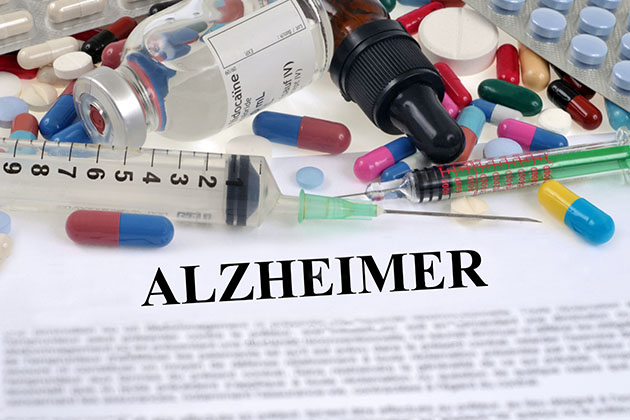Studie ukazuje novou kombinační terapii dvou sloučenin rostlinného původu pro zvrácení kognitivního poškození u myší
Žije s nimi nejméně 50 milionů lidí Alzheimerova nemoc celosvětově. Celkový počet pacientů s Alzheimerovou chorobou by do roku 152 mohl překročit 2050 milionů. Prvními příznaky kognitivní poruchy u pacientů s Alzheimerovou chorobou (AD) jsou problémy s pamětí a zhoršené rozhodování. Jak nemoc postupuje, pacienti pociťují významnou ztrátu paměti a kognitivní potíže. Neexistuje žádný lék na Alzheimerovu chorobu a také žádné prostředky, jak zastavit nebo zpomalit její progresi nemoc. K dispozici jsou omezené léky a další možnosti, které mohou zmírnit některé příznaky. U Alzheimerovy choroby se amyloidní plaky hromadí mezi neurony v mozku pacientů. U zdravých lidí, protein fragments called amyloid beta protein are broken down and removed. But in case of Alzheimerova choroba, these fragments accumulate to form hard, insoluble amyloid plaques which contribute to impaired transmission of impulses across neurons and cause subsequent symptoms of Alzheimerova choroba onemocnění.
Ve studii publikované v Journal of Biological Chemistry, výzkumníci ukázali, že kombinace terapie could reverse symptoms of Alzheimer’s disease in mice who were genetically predisposed to develop Alzheimerova choroba. Two promising plant-derived compounds were explored which have complimentary amyloidogenic properties, firstly EGCG (epigallocatechin-3-gallate) an important component of green tea and secondly FA (ferulic acid) which is present in tomatoes, rice, oats and carrots. Such natural dietary compounds are called ‘nutraceuticals’ – compounds which are well-tolerated natural supplements, have drug-like properties and could be simply incorporated into one’s diet.
Pro analýzu mělo 32 myší Alzheimerova choroba like symptoms were randomly assigned into four groups. Each group had equal number of males and females and also healthy mice. When mice were 12 months old, they were given either (a) EGCG and FA (b) EGCG or FA or (c) a placebo once daily for a period of 3 months. The dosage given was 30 mg per kg of body weight as this dose is well-tolerated by humans and can be consumed as portion of a healthy dietary supplement. Before and after this special diet administration, researchers conducted neuropsychological tests which can analyze thinking and memory and thus make assessments about the disease. One of the tests done for memory assessment was the ‘Y-shaped maze’ which can test a mouse’s spatial working memory analogous to a human finding a way out of a building. Mice with Alzheimerova choroba like symptoms cannot navigate such a maze with ease as compared to healthy counterparts.
After administration of special diet for three months, mice having Alzheimerova choroba like symptoms performed similar to healthy mice in learning and memory tests. This suggested that combination therapy of EGCG-FA reverses cognitive impairment in mice having Alzheimerova choroba like symptoms. Mice treated with combination of EGCG-FA exhibited reduced abundance of amyloid-beta proteins when compared with individual treatment of these compounds. The underlying mechanism could be the ability of these compounds to prevent amyloid precursor proteins from breaking down into smaller protein fragments – amyloid beta – which accumulate in an Alzheimerova choroba patient’s brain as plaques. EGCG and FA together reduced neuroinflammation and oxidative stress in the brain – both of which are important part of Alzheimer’s in humans. Research which is successful in mice may not translate in humans but such plant-derived substances or supplements offer significant promise towards Alzheimer’s therapeutics in humans.
Tento úspěšný výzkum na myších může připravit cestu pro lidské pokusy. Takové látky nebo doplňky rostlinného původu jsou významným příslibem pro léčbu Alzheimerovy choroby.
***
{Původní výzkumný dokument si můžete přečíst kliknutím na odkaz DOI uvedený níže v seznamu citovaných zdrojů}
Zdroje)
Mori T a kol. 2019. Kombinovaná léčba fenolickými (-)-epigalokatechin-3-galátem a kyselinou ferulovou zlepšuje kognici a snižuje u myší patologii podobnou Alzheimerově chorobě. Journal of Biological Chemistry. 294 (8). http://dx.doi.org/10.1074/jbc.RA118.004280






































